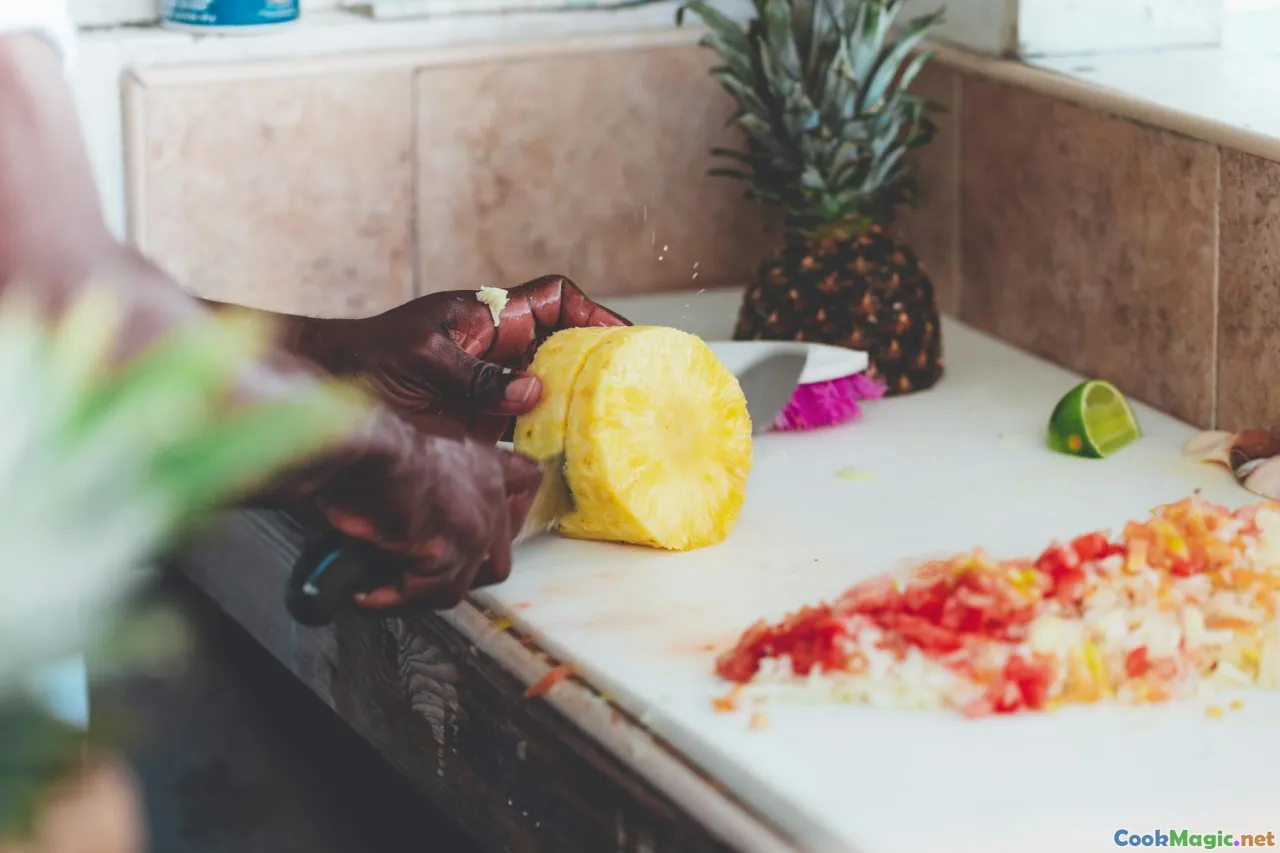Coconut in Bahamian Cuisine
8 min read Discover the vital role of coconut in Bahamian cuisine, from traditional dishes to cultural traditions, and its sensory-rich culinary delights. April 29, 2025 12:00
Coconut in Bahamian Cuisine
Imagine walking along the sun-drenched beaches of the Bahamas, where the air is thick with the scent of salt, sea, and the sweet, fragrant aroma of coconuts. For many Bahamians, coconut isn't just a fruit; it's the heartbeat of their culinary heritage—a versatile ingredient that has shaped the island’s traditional dishes, social rituals, and even its identity. From the lush groves that line the islands to the bustling markets where coconut products are sold, this humble nut has woven itself into the fabric of Bahamian life.
The Cultural Significance of Coconut in the Bahamas
In the Bahamas, coconuts symbolize more than just tropical abundance; they embody resilience, community, and a deep connection to the land and sea. Historically, coconut palms were among the first trees cultivated by early settlers and indigenous peoples, providing sustenance, shelter, and spiritual meaning.
Coconut trees, often called the "Tree of Life," are omnipresent along the coastlines—standing tall and proud, their fronds swaying in the breeze—serving as natural landmarks and sources of nourishment. The coconut's significance extends to cultural celebrations, storytelling, and even local folklore, where it often symbolizes prosperity and survival.
The Varieties and Harvesting of Coconuts
Bahamian coconuts are predominantly the mature, brown, fibrous variety, prized for their rich, creamy flesh and hydrating water. Harvesting coconuts is a communal activity, often involving young and old, as they climb the towering palms using traditional techniques or with the help of ladders.
The process begins with careful selection—ripe coconuts are gently knocked down or shaken free. Once on the ground, they are husked, cleaned, and prepared for various culinary uses. The freshness of coconut is crucial for authentic Bahamian dishes, contributing to their distinctive flavor and texture.
Culinary Uses of Coconut in Bahamian Dishes
1. Coconut Water and Flesh: Refreshing and Versatile
Coconut water is a natural electrolyte-rich beverage that is enjoyed straight from the fruit or used as a base in drinks. The tender, white flesh—known as copra—serves as the foundation for many traditional recipes.
2. Coconut Milk and Cream: The Heart of Many Recipes
Extracted by grating the flesh and squeezing it through a cloth, coconut milk and cream are staples in Bahamian cooking. They lend a rich, silky texture and a subtly sweet, nutty flavor that elevates savory stews and desserts.
3. Desiccated and Dried Coconut: For Baking and Snacks
Dried coconut shreds are used in baking, making confections, and as toppings for breakfast dishes, adding a crunchy texture and intensified coconut aroma.
Iconic Bahamian Dishes Featuring Coconut
1. Coconut Crab (Fulfilling the Island’s Crustacean Connection)
While not directly a coconut dish, the coconut crab—one of the largest terrestrial arthropods—has a dietary connection to coconuts. In some islands, these crabs are known to climb coconut palms, cracking open coconuts with their powerful claws. They are considered a delicacy when prepared properly, often cooked with coconut milk and spices.
2. Coconut Rice
A staple side dish, coconut rice is prepared by cooking long-grain rice with coconut milk, often infused with herbs like thyme and scallions. The result is a fragrant, slightly sweet rice that perfectly complements seafood and grilled meats.
3. Bahamian Fish Stew with Coconut Milk
This hearty stew combines freshly caught fish, seasoned with local spices, vegetables, and generous amounts of coconut milk. The coconut adds a luscious creaminess, balancing the spices and highlighting the freshness of the seafood.
4. Coconut Conch Salad
Conch—a treasured Bahamian delicacy—is often prepared as a ceviche-like salad, marinated with lime juice, onions, peppers, and coconut shavings. The coconut provides a subtle sweetness that pairs beautifully with the briny conch.
5. Coconut Tart and Confections
Sweet treats such as coconut tarts, made with shredded coconut filling and flaky pastry, are beloved desserts. They are often enjoyed at local festivals, markets, and family gatherings, embodying the island’s love for coconut-infused sweets.
Cooking Techniques and Tips for Using Coconut
- Grating and Extracting Coconut Milk: Freshly grated coconut yields the best flavor. Use a traditional grater or a food processor, then squeeze through a cheesecloth to extract milk.
- Toasting Coconut: For added depth, toasted shredded coconut enhances flavor and provides a nutty aroma—perfect for garnishing desserts.
- Cooking with Coconut Milk: Simmer gently to prevent curdling, and combine with local spices such as allspice, ginger, and thyme for authentic flavor.
- Preservation: Dried coconut can be stored for months, while fresh coconut should be used quickly or frozen.
Personal Reflections and Culinary Adventures
Having spent time in the Bahamas, I’ve been fortunate to experience firsthand the vibrant coconut-infused cuisine. One memory that stands out is sitting under a coconut palm at a beachside shack, savoring a steaming bowl of fish stew thickened with coconut milk, accompanied by a cold Kalik beer. The richness of the coconut, combined with the freshness of the fish and the warmth of the island sun, creates an unforgettable sensory symphony.
I also recall helping a local fisherman’s wife crack open coconuts with a machete, the sound echoing through the quiet morning. Watching her skillfully extract the flesh and water, I realized how integral coconut is—not just as food but as a symbol of resourcefulness and community.
Conclusion: The Enduring Spirit of Coconut in Bahamian Life
Coconut in Bahamian cuisine is more than a flavor; it’s a cultural cornerstone that represents resilience, resourcefulness, and the island’s natural bounty. Its versatility—from hydrating water to decadent desserts—mirrors the ingenuity of the Bahamian people who have mastered transforming this humble fruit into culinary masterpieces.
So next time you indulge in a tropical dish or sip a coconut-infused beverage, remember the rich history and vibrant culture that coconuts bring to the Bahamas. They are, after all, a testament to the island’s enduring spirit and its deep-rooted connection to nature’s gifts.









